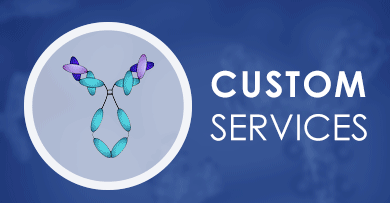 Loading...
Loading...

GTF2H1
 Loading...
Loading...Anti-GTF2H1 Products
-
- Species Reactivity: Human
- Type: Mouse IgG
- Application: WB, ICC
-
- Species Reactivity: Human, Mouse, Rat, Bovine, Dog, Pig
- Type: Mouse IgG
- Application: WB
-
- Species Reactivity: Human, Mouse, Rat, Bovine, Dog
- Type: Mouse IgG
- Application: WB
-
- Derivation: Mouse
- Species Reactivity: Human, Mouse
- Type: Mouse IgG1
- Application: WB, ICC
-
- Derivation: Mouse
- Species Reactivity: Human, Mouse, Dog, Pig, Rat
- Type: Mouse IgG
- Application: ELISA, WB, ICC
- Mouse Anti-GTF2H1 Recombinant Antibody (VS3-FY2612) (VS3-FY2612)
-
- Species Reactivity: Human
- Type: Mouse IgG
- Application: WB, ICC, IP
- Recombinant Mouse Anti-Human GTF2H1 Antibody (MOB-2461MZ)
-
- Species Reactivity: Human
- Type: Mouse antibody
- Application: ICC, IF, IHC-P, WB
- Chicken Anti-GTF2H1 (ab1) Polyclonal IgY (BRD-0243MZ)
-
- Species Reactivity: Human, Mouse, Rat
- Type: Chicken antibody
- Application: WB
- Chicken Anti-GTF2H1 (ab2) Polyclonal IgY (BRD-0244MZ)
-
- Species Reactivity: Human, Mouse, Rat
- Type: Chicken antibody
- Application: WB
- Anti-GTF2H1 Immunohistochemistry Kit (VS-0325-XY975)
-
- Species Reactivity: Human, Rat
- Target: GTF2H1
- Application: IHC
- Anti-Human GTF2H1 Immunohistochemistry Kit (VS-0525-XY2982)
-
- Species Reactivity: Human
- Target: GTF2H1
- Application: IHC
Can't find the products you're looking for? Try to filter in the left sidebar.Filter By Tag
Our customer service representatives are available 24 hours a day, from Monday to Sunday. Contact Us
For Research Use Only. Not For Clinical Use.
Background
Cancer-related genes
Intracellular
Low cell type specificity
Low immune cell specificity
Low cell line specificity
Component of the 7-subunit TFIIH core complex composed of XPB/ERCC3, XPD/ERCC2, GTF2H1, GTF2H2, GTF2H3, GTF2H4 and GTF2H5, which is active in NER. The core complex associates with the 3-subunit CDK-activating kinase (CAK) module composed of CCNH/cyclin H, CDK7 and MNAT1 to form the 10-subunit holoenzyme (holo-TFIIH) active in transcription. Interacts with PUF60. (Microbial infection) interacts with Rift valley fever virus NSs (via OmegaXaV motif).

